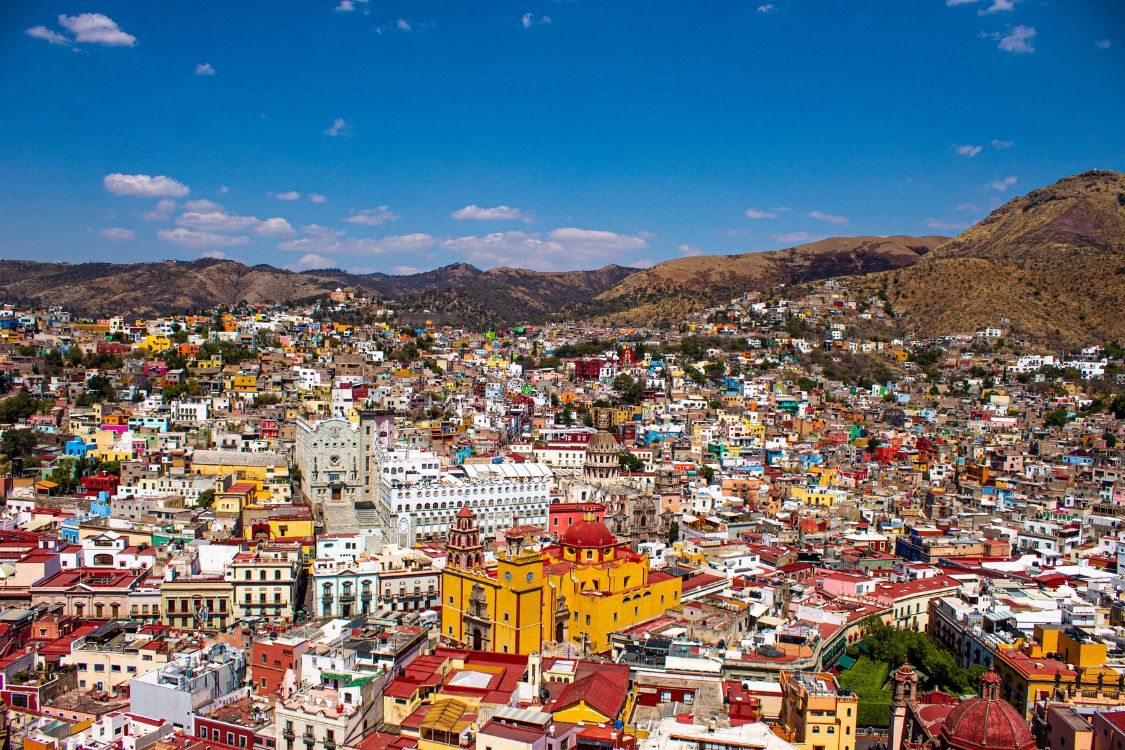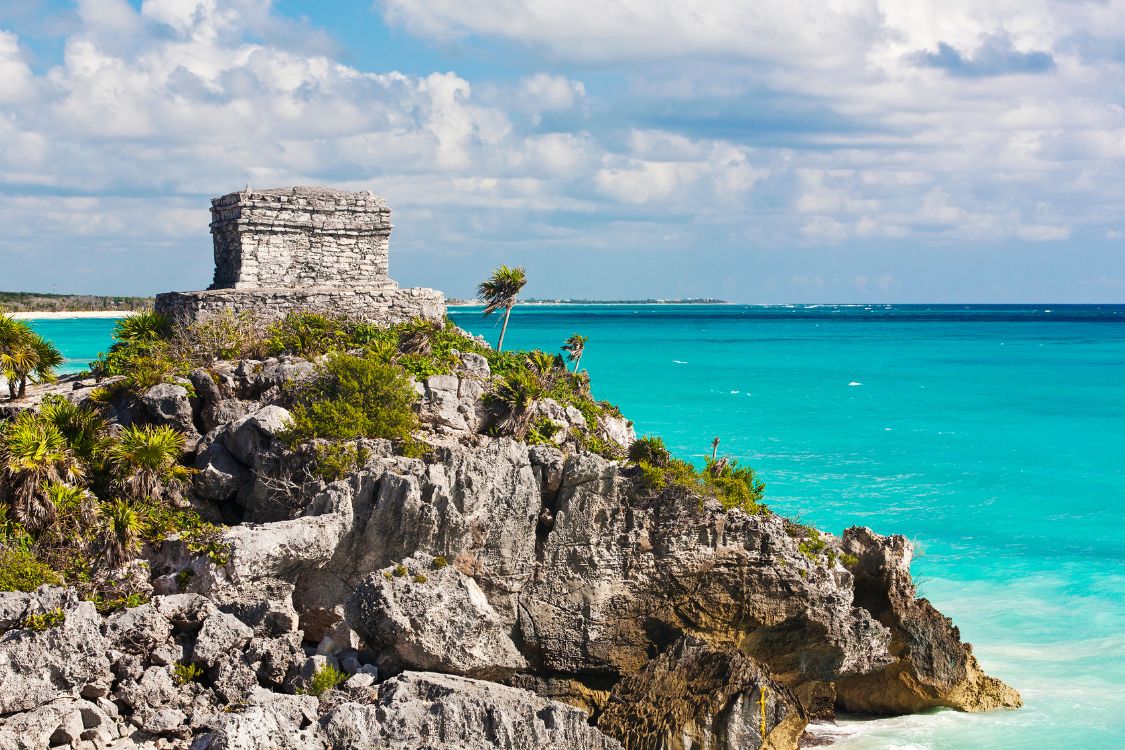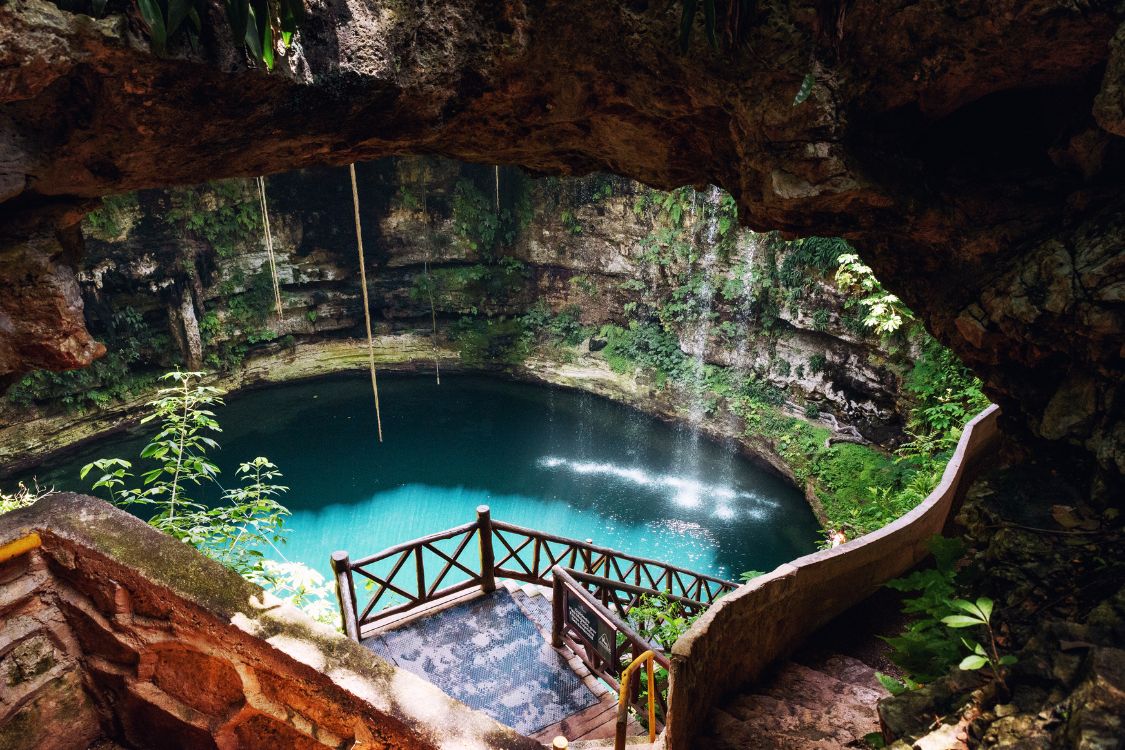Is visiting Mexico in the rainy season a misstep, or could it be the best time unnoticed by many? Understanding Mexico’s climate will change the way you approach travel here. This article dissects the country’s weather patterns across diverse regions, revealing the best seasons for activities and cultural engagement. Whether it’s sunny beach escapades or exploring cooler highlands, knowing when to go plays a crucial role. Brace yourself for insights that align your travel goals with Mexico’s ideal seasons, making the most of your adventure with timing as your guide.
Table of Contents
ToggleUnderstanding Mexico’s Climate and Weather Patterns

The dry season in Mexico, spanning from November to March, presents the most favorable conditions for outdoor activities. During this period, weather across most regions is characterized by comfortable temperatures and low humidity. This makes it an ideal time for exploring outdoor attractions such as Mayan ruins or enjoying beach activities on the Pacific and Caribbean coasts. The dry season also coincides with the high tourist season, drawing visitors seeking escape from colder climates.
Mexico’s diverse geography results in significant climate variations. Coastal areas, including popular destinations like Cancún and Riviera Maya, remain warm throughout the year, making them attractive for beachgoers. In contrast, the highlands, such as Mexico City and Oaxaca, experience cooler temperatures, particularly from December to February. These cooler months offer a refreshing break from the coastal heat, appealing to those who prefer milder climates and cultural exploration.
The rainy season occurs from May to October, with September reaching peak hurricane activity. During this time, travelers may encounter increased rainfall and potential storms, particularly along the Pacific and Gulf coasts. Despite the wet conditions, this period provides a lush, green landscape and fewer tourists, presenting a quieter experience for those willing to navigate the occasional downpour. However, hurricane risks should be considered, especially when planning visits to vulnerable coastal regions.
| Region | Jan Temp (°F) | July Temp (°F) | Annual Rainfall (inches) |
|---|---|---|---|
| Cancún | 75 | 82 | 50 |
| Mexico City | 55 | 65 | 30 |
| Oaxaca | 60 | 70 | 40 |
| Riviera Maya | 76 | 83 | 55 |
| Cabo San Lucas | 70 | 85 | 10 |
| Tulum | 75 | 82 | 47 |
Peak Tourist Times in Mexico
The high tourist season in Mexico extends from December to April, coinciding with the dry season. During this period, travelers can enjoy favorable weather conditions, making it ideal for beach activities, sightseeing, and outdoor adventures. This season also aligns with several holiday events, such as Christmas and Easter, which further attract visitors from colder regions seeking a warm escape. Consequently, travel costs often rise during these months, with increased rates for accommodations and flights, especially in popular destinations like Cancun, Cabo San Lucas, and the Riviera Maya.
Popular regions experience a surge in visitors during the high season. Cancun, known for its vibrant nightlife and stunning beaches, becomes a hotspot for international tourists. Similarly, Cabo San Lucas draws crowds with its luxury resorts and picturesque landscapes. While these areas offer an array of activities and cultural experiences, the influx of tourists can lead to crowded attractions and longer wait times. Travelers planning to visit Mexico during this period should book accommodations early to secure the best options and anticipate higher expenses compared to the low season.
Pros of visiting during peak season:
- Enjoy the best weather conditions for outdoor activities.
- Participate in vibrant holiday events and cultural festivities.
- Experience lively atmospheres in popular tourist destinations.
Cons of visiting during peak season:
- Higher travel costs for accommodations and flights.
- Crowded attractions and longer wait times.
- Limited availability in popular hotels and resorts.
Off-Peak and Budget-Friendly Travel Periods

May to June and September to November are the most budget-friendly months to visit Mexico. During these low-season periods, travelers can take advantage of reduced prices for accommodations and flights. Fewer tourists mean more availability and better deals, especially in coastal areas. This makes it an attractive option for those looking to enjoy Mexico’s offerings without the high-season costs.
Traveling during the low season does come with trade-offs. These months coincide with Mexico’s rainy season, which can lead to unpredictable weather and increased hurricane risks, particularly in coastal regions. Travelers should be prepared for sudden rain showers and potential travel disruptions. Moreover, some tourist attractions might operate on reduced schedules due to lower visitor numbers.
To maximize budget travel during these times, consider booking flights and accommodations well in advance to secure the best deals. Utilize local transportation and explore less touristy destinations that offer authentic experiences at a fraction of the cost. Additionally, travel insurance is advisable to mitigate potential weather-related disruptions, ensuring a smoother journey through Mexico’s diverse landscapes.
| Season | Average Flight Cost (USD) | Average Accommodation Cost (USD per night) |
|---|---|---|
| High Season | 450 | 150 |
| Low Season | 300 | 100 |
| High Season (Holiday) | 600 | 200 |
| Low Season (Rainy Months) | 280 | 90 |
Festivals and Cultural Events Throughout the Year
Mexico is renowned for its vibrant cultural festivals, which occur throughout the year and offer unparalleled insights into the country’s rich traditions. One of the most iconic events is Día de los Muertos, celebrated in early November. This festival honors deceased loved ones with elaborate altars, traditional foods, and colorful parades. Another significant celebration is Mexico’s Independence Day on September 16, marked by patriotic festivities, fireworks, and the reenactment of “El Grito” in town squares across the nation. These events not only highlight Mexico’s cultural heritage but also provide an immersive experience for visitors, showcasing the nation’s diverse customs and regional variations.
Timing a trip to coincide with these festivals can enhance a traveler’s experience, but it also requires careful planning. During major festivals, accommodation options may become limited and prices can spike due to increased demand. Popular tourist areas may experience higher foot traffic, affecting both transportation and access to attractions. Travelers should consider booking accommodations and transportation well in advance to secure the best rates and availability. Additionally, participating in lesser-known regional festivals can offer a more intimate glimpse into local traditions, often with fewer crowds and more affordable options.
| Festival | Location | Month |
|---|---|---|
| Día de los Muertos | Mexico City, Oaxaca | November |
| Independence Day | Nationwide | September |
| Carnival | Veracruz, Mazatlán | February |
| Guelaguetza | Oaxaca | July |
| La Noche de Rábanos | Oaxaca | December |
Best Times for Beach Activities and Water Sports

Late fall through early spring is the prime period for enjoying Mexico’s beach activities. During these months, the weather remains sunny and warm, providing perfect conditions for sunbathing and outdoor adventures. Average temperatures hover around 80°F, especially during winter, making it comfortable for both beachgoers and those interested in water sports. This period aligns with the high tourist season, so travelers should expect more bustling beaches and vibrant atmospheres.
For those interested in marine life, July stands out as the peak month for whale shark sightings, particularly around Isla Contoy. Diving enthusiasts will find Cozumel’s waters most inviting from November to April, offering clear visibility and a rich underwater ecosystem. These months provide the optimal conditions for exploring underwater caves, colorful reefs, and the diverse marine life that inhabits these areas. Whether snorkeling or diving, the combination of mild temperatures and calm seas enhances the experience.
Regional differences significantly impact beach and water sport conditions in Mexico. On the Pacific coast, from Puerto Vallarta to Zihuatanejo, surfing enthusiasts can catch the best waves from May through October. Conversely, the Caribbean side, including Cancún and Tulum, offers calmer waters suitable for swimming and snorkeling. Variability in regional climates means travelers need to consider specific activities and destinations for a fulfilling beach experience.
Top 5 beach destinations for specific activities:
- Cancún: Known for vibrant nightlife and snorkeling.
- Cozumel: Premier diving location with excellent visibility.
- Tulum: Offers serene beaches with historical ruins nearby.
- Puerto Escondido: Famous for surfing, especially during the summer.
- Isla Contoy: Best for whale shark sightings in July.
Weather Considerations for Specific Regions
Cancun and the Riviera Maya experience their most favorable weather conditions from November to April. During these months, temperatures are moderate, typically ranging between 75°F and 85°F, and humidity levels are low. This period coincides with the dry season, providing an ideal setting for beach activities, snorkeling, and exploring Mayan ruins. Travelers should expect more visitors during this time, as the appealing climate draws tourists from around the globe.
Cabo San Lucas offers warm weather year-round, making it a popular destination for sun-seekers. However, it is crucial to be aware of the hurricane season, which spans from June to October. During these months, the region is susceptible to storms that can disrupt travel plans. While hurricanes are not guaranteed, travelers should monitor weather forecasts closely and consider travel insurance to mitigate potential disruptions.
Tulum is best visited during the dry months, from November through April, when the weather is both pleasant and less humid. These months allow for more enjoyable exploration of Tulum’s beaches and ancient ruins, with fewer crowds compared to the peak tourist season. The combination of cultural attractions and natural beauty makes Tulum an attractive destination during this period.
When planning a trip to these regions, it is advisable to book accommodations and activities in advance, especially during the high season. Travelers should also be prepared for potential weather variations, as climate conditions can change rapidly. Packing essentials such as lightweight clothing, sun protection, and rain gear ensures a comfortable and adaptable travel experience.
| Region | Average Jan Temp (°F) | Average July Temp (°F) |
|---|---|---|
| Cancún | 75 | 82 |
| Cabo San Lucas | 70 | 85 |
| Tulum | 75 | 82 |
Leveraging Travel Insights and Planning with Xpat Journeys

Xpat Journeys excels in providing expert insights and personalized travel plans for those looking to explore Mexico. What are the benefits of using Xpat Journeys for travel planning? By offering tailored guidance on ideal travel times, they help travelers avoid peak tourist crowds and high prices, ensuring a more enjoyable experience. Their expertise allows them to identify budget-friendly deals, making it easier for travelers to explore Mexico without breaking the bank. Additionally, Xpat Journeys takes into account cultural events and local festivities, allowing visitors to immerse themselves in authentic Mexican traditions.
How does Xpat Journeys enhance the travel experience? Their in-depth knowledge of Mexico’s diverse regions enables them to craft itineraries that cater to individual interests, whether it’s beach relaxation, historical exploration, or adventure activities. By handling logistics and providing valuable local insights, they ensure a seamless travel experience that maximizes both time and enjoyment. Travelers can benefit from a stress-free journey, knowing that every detail is expertly managed, allowing them to focus on creating lasting memories.
Key services offered by Xpat Journeys:
- Personalized travel itineraries tailored to individual preferences.
- Access to exclusive travel deals and discounts.
- Expertise in scheduling visits to coincide with local cultural events.
Final Words
Exploring the climate in Mexico by month reveals a nation of diverse weather patterns, influenced by region and season. The dry season, from November to March, stands out as the best time for outdoor activities, enticing visitors to enjoy Mexico’s beautiful landscapes under ideal conditions.
Peak tourist times attract holiday travelers, impacting costs and availability, while off-peak months provide budget-friendly options, albeit at the mercy of the rainy season.
Lastly, cultural festivals add vibrant experiences throughout the year. By understanding these dynamics, travelers can optimally plan the best time to travel to Mexico, ensuring rewarding and memorable experiences.
FAQ
What month is best to go to Mexico?
A: November to April is the best time to visit Mexico, offering ideal weather conditions with minimal rainfall. This period aligns with the dry season, perfect for outdoor activities and exploring various regions.
What are the cheapest months to travel to Mexico?
A: The cheapest months to travel to Mexico are May to June and September to November. These months fall within the low tourist season, providing reduced prices on flights and accommodations.
What is Mexico’s rainy season?
A: Mexico’s rainy season occurs from May to October. During this time, expect frequent rain showers, with September experiencing the highest hurricane activity, particularly in coastal regions.
What month is the best time to go to Cancun, Mexico?
A: The best time to visit Cancun is from December to April. The weather is pleasant with moderate temperatures and low humidity, making it ideal for beach activities and exploration.
Is November a good time to visit Mexico?
A: November is an excellent time to visit Mexico as it marks the beginning of the dry season. The weather is generally pleasant, with reduced rainfall, suitable for outdoor and cultural activities.
Hazel Wall is a passionate traveler, writer, and explorer dedicated to sharing her experiences and insights with fellow adventurers. With a background in journalism and a deep love for discovering new cultures, Hazel has journeyed across continents, immersing herself in diverse landscapes and traditions.





